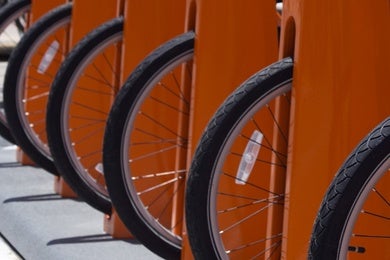Is it Time to Rethink Financial Services for Women Entrepreneurs? We Conducted a Survey to Find Out

Despite the business case, due to their repayment behavior, women-led companies' significant financing needs still need to be met.
A recent survey by IDB Invest revealed that SMEs led by women have a loan default rate of only 2.7%, while that of men is as high as 4%. But the question remains: what are financial institutions offering women?
More and more institutions are becoming aware of the advantages of serving women better and that this would positively impact their client portfolios while directly contributing to the development of their countries.
For example, if they took advantage of this opportunity, financial institutions in Mexico could earn an additional US$1.870 billion annually, in Peru, US$756 million, and in Guatemala, US$283 million.
However, many institutions still need to develop a comprehensive strategy to take advantage of the potential of this market.
These are some of the insights gathered from our study titled "Women Rising: A study of the growing financial power of the women’s market in LAC, and what this means for financial institutions," recently presented.
To better understand how to serve women effectively and contribute to their economic development, we engaged in conversations with three of our clients during the presentation of this study: the Guatemalan commercial bank GyT, the Colombian fintech Juancho Te Presta, and the Ecuadorian cooperative Jardín Azuayo.
For GyT, it was evident that they should target the female market when they realized that 40% of their clients were women. They developed a product ecosystem, including a credit card that converts part of the spending into savings.
Juancho Te Presta currently does not offer specific products for women, but diligently studies disaggregated data by gender to align with the needs and behaviors of their customers.
You may also like
- Reigniting Women-led Businesses in the Caribbean with Better Access to Finance
- IDB Invest Boosts Women-Owned Enterprises in Brazil
These data reveal significant growth potential coupled with a commitment to financial responsibilities. Consequently, they approve higher credit amounts for women and lend to female heads of households, and under 40.
For Jardín Azuayo, the key has been an inclusive vision, especially to provide women and communities in remote areas access to all their services. Today, they know that 49.6% of their 720,000+ members are women. They aim to continue expanding access to rural centers, where their products can immediately affect regional development.
Banking with gender lenses
These diverse views on women's banking and financial offerings to attract them were evident in our study. Among financial institutions that collect gender-disaggregated data, 57% track it for all products in their personal banking portfolio. However, only 41% of micro, small, and medium-sized enterprises with female owners or leaders do so.
Only 32% of banks, 30% of fintechs, 33% of development banks, and 38% of cooperatives claim that women are essential to their strategy. This percentage is significantly higher for microfinance institutions, at 71%.
Only 34% of surveyed banks have a dedicated program or department for women's banking, a significantly lower figure among microfinance institutions and fintechs.
These are disparate figures on the rise. We know that we are at a crucial moment to continue supporting our institutions in investing, recognizing, understanding, and validating the women's market.
Usually, institutions already differentiating themselves by serving this market have gender lenses in product development, an efficient and user-friendly online platform, inclusive credit processes, alternative credit scoring, adjusted interest rates, specific cross-selling initiatives, and non-financial services, among others.
The key is to design women-centric approaches, improve the collection of gender-disaggregated data, and study its consequences. At IDB Invest, we are committed to supporting our clients in recognizing business opportunities and the need to invest in the women's market.
We invite you to review our study for additional tools to enable financial institutions of all sizes to develop strategies that expand their offerings and improve financial access opportunities for women entrepreneurs in the region.
Latest posts
LIKE WHAT YOU JUST READ?
Subscribe to our mailing list to stay informed on the latest IDB Invest news, blog posts, upcoming events, and to learn more about specific areas of interest.
Subscribe



